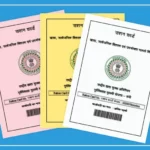Filing your income tax return can be tricky, especially when choosing the right ITR form. If you select the wrong one—for example, using ITR-1 instead of ITR-3—your return might be marked as defective.
The tax department may then ask you to correct it. If you don’t fix the mistake on time, your return could even be rejected.
Sometimes these errors are not noticed right away, but they can still cause delays, problems with refunds, or issues in future tax assessments.
Made a Mistake? You Can Revise Your Return
If you spot an error after filing your return, don’t worry—you’re allowed to file a revised return.
This lets you fix things like wrong income details, incorrect deductions, or even the ITR form itself. Just be sure to revise it within the allowed time.
How Many Times Can You Revise?
There is no limit. You can revise your return as many times as needed, as long as you do it before the deadline. Each new version replaces the previous one.
What’s the Deadline?
For this assessment year, the deadline to revise your return is December 31. However, the government may extend it, so keep checking for updates.
Steps to File a Revised Return
Log in to the Income Tax e-filing portal.
Choose the option to file a revised return.
Enter the acknowledgement number and date of your original return.
Select the correct ITR form and update the details.
Submit and validate the revised return.
Final Tip: Double-Check Everything
It’s common to make mistakes in tax returns, and the good news is—you can fix them.
But always review your details carefully before resubmitting. Correct information helps you avoid delays, rejections, and problems in the future.
























